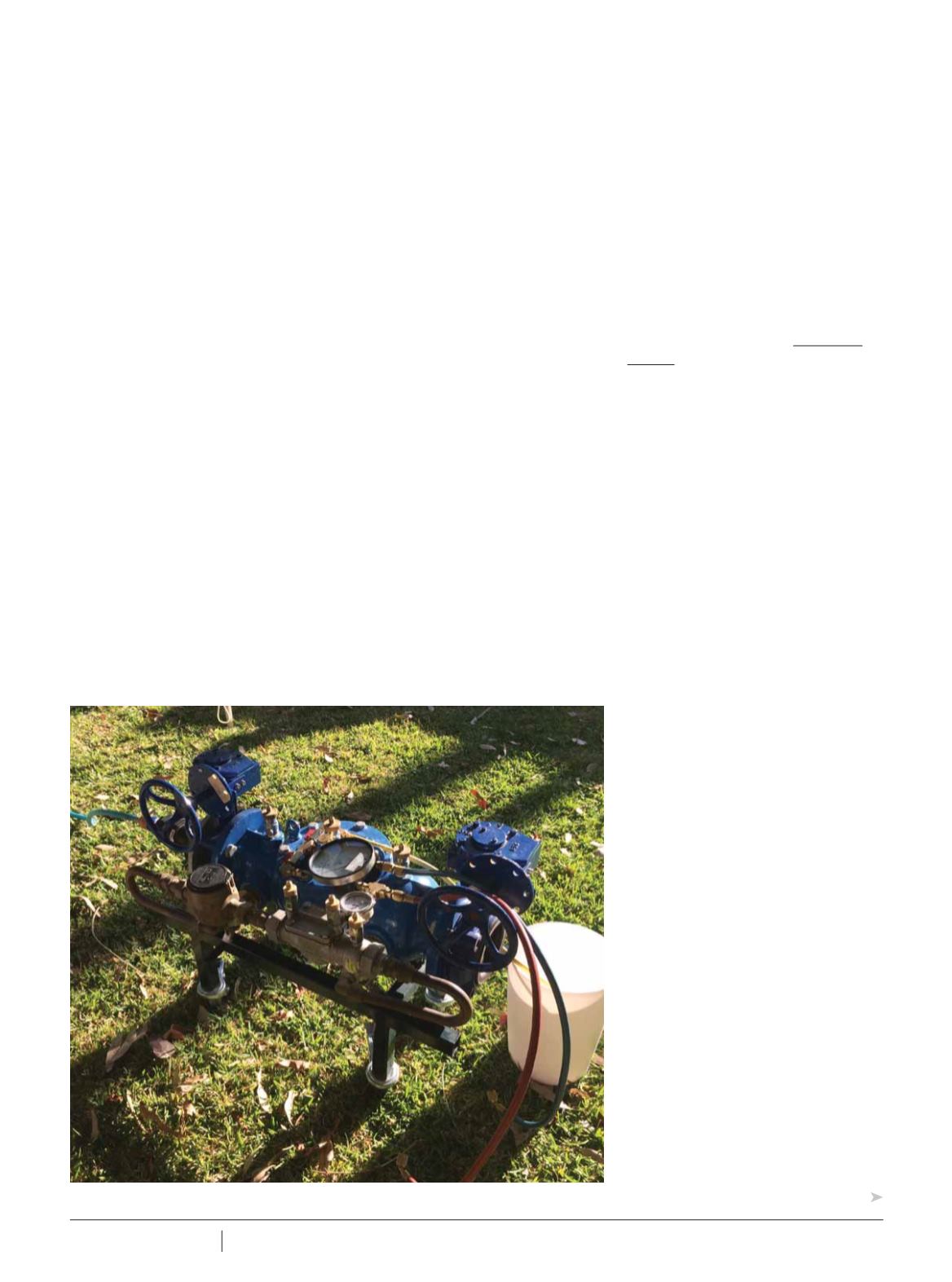

6 8
PLUMBING CONNECTION Summer 2017
COMMITMENT TO UNDERSTANDING
THE BASICS OF BACKFLOW
B
ackflow prevention devices are
everywhere but we may not be
aware of them. For example
most homes in Australia will have a
dual check valve backflow prevention
device installed in the residential water
meter assembly. Many homes have hose
connection vacuum breakers attached
to garden taps and every toilet cistern
has in-built air gap backflow protection
to ensure the drinking water does not
come in contact with non-drinking water.
Backflow prevention devices protect
against contamination of the drinking
water caused by illegal or inadvertent
cross connections between drinking
water and sources of non-drinking water.
The level of protection necessary to
all drinking water connections is laid out
in the Plumbing Code of Australia which
is part of the National Construction
Code.
When a State or Territory calls up
the National Construction Code in their
plumbing regulations, unless otherwise
stipulated, it makes the use of backflow
preventers mandatory.
Making it mandatory through
legislation is one thing but while there
is no requirement for additional skills
development for the plumbing industry
we risk the fact that the public will be
exposed to potential danger.
The Backflow Prevention Association
of Australia Inc. (BPAA) is committed
to improving the knowledge and
understanding of backflow through
seminars, events, conferences and
workshops around Australia and
resources on our website, www.bpaa.
org.au.
Our national conference held in
August, on the Sunshine Coast in
Queensland saw around 100 industry
professionals attend the 2 ½ day event
which included a half day workshop for
backflow contractors that focussed
on building a better business plus
refreshing their skills on testing and
new standards.
Presentations were given by a range of
industry speakers and included:
Shayne La Combre - chief executive
officer, Plumbing Industry Climate
Action Centre (PICAC) and Chair, World
Plumbing Council (WPC). Shayne
officially opened the conference and
his presentation provided many with a
thought provoking message of where
drinking water sat on a world scale and
how the World Plumbing Council had
developed the 4 Pillars Programme to
improve education and understanding
of plumbing internationally.
Bruce Hutton principal asset planning
manager at SEQ Water gave an excellent
overview of how they supply bulk water
and the challenges they face with
droughts, floods, aging technology and
environmental implications that they
encounter in getting the bulk water to
the water supplier.
Ester Blest from the Service Trades
Council Queensland and Assistant
Commissioner for the Queensland
Building & Construction Commission
gave an insightful presentation on
how the Services Trades Council in
Queensland are implementing a raft
of strategies for the Protection of the
Service Trades.
Robert Dwyer, technical advisor
backflow prevention, Central Highlands
Water presented a valuable case
%DFNÀRZ LV RQH RI WKRVH WKLQJV WKDW \RX JHQHUDOO\ FDQQRW VHH KHQFH ZH JR EOLQGO\ WKURXJK OLIH
EOLVVIXOO\ XQDZDUH RI WKH GDQJHUV OXUNLQJ LQ WKH GULQNLQJ ZDWHU V\VWHP ZULWHV
Peter McLennan
Backflow prevention devices are an integral part of the plumbing infrastructure
BACKFLOW PREVENTION
















